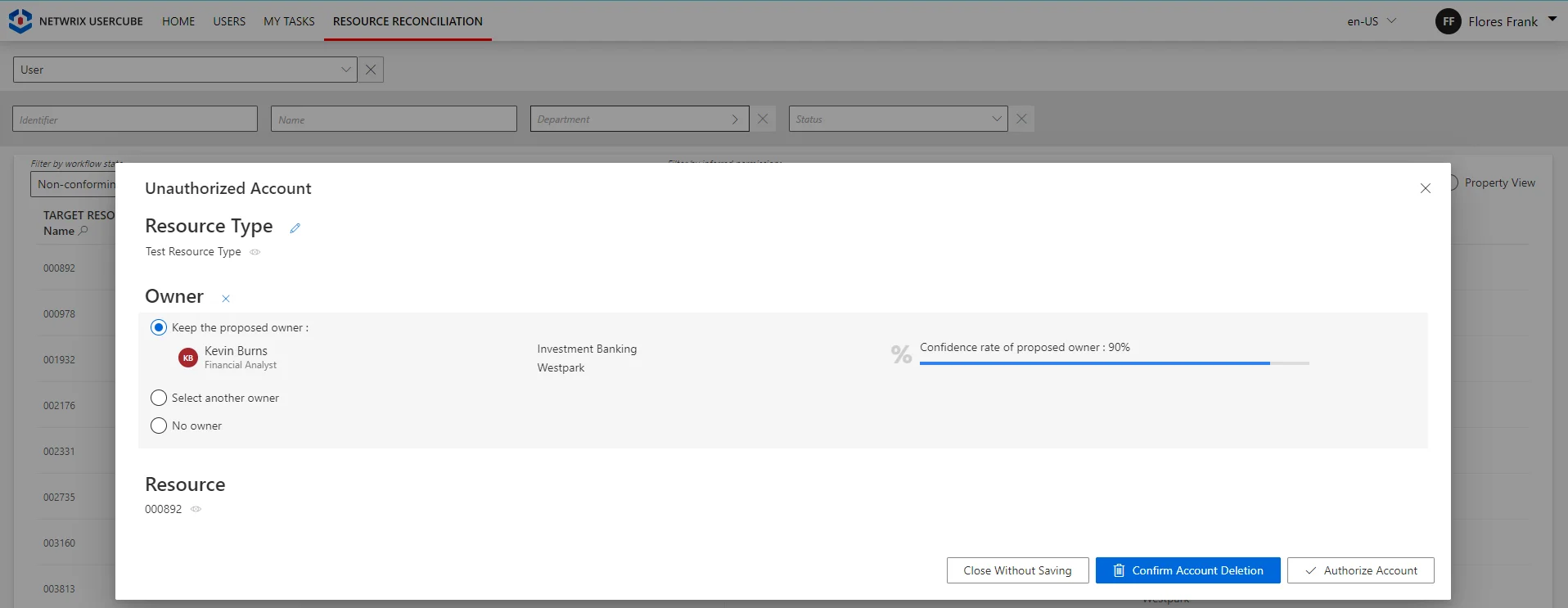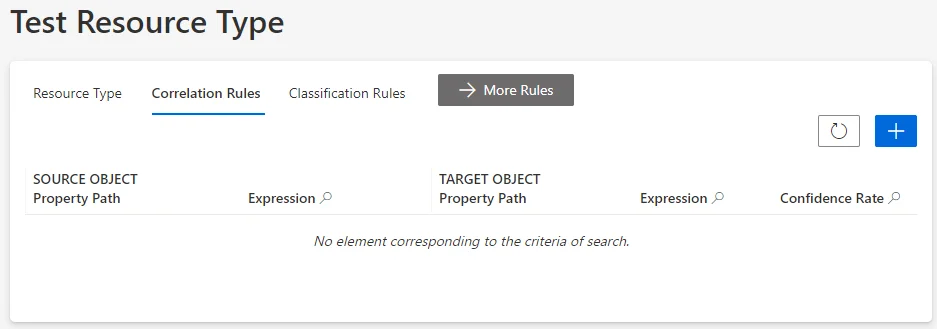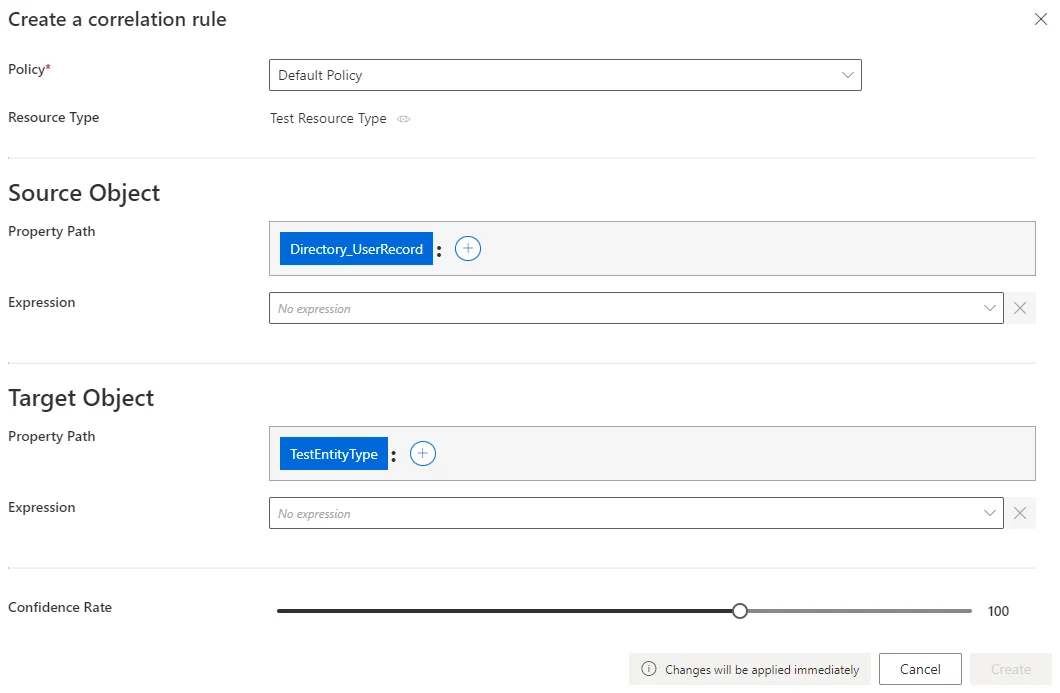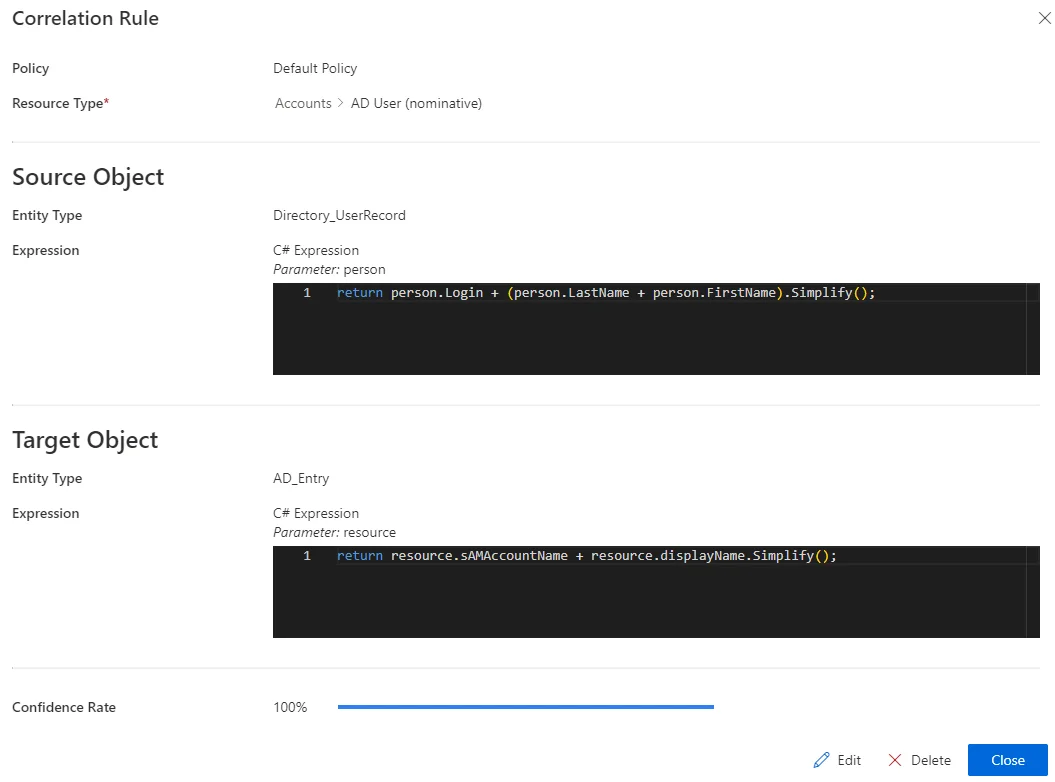Correlate Resources
How to define correlation rules to match up resources across systems, usually accounts with their owner.
Overview
Correlation purpose
Correlation is the process of establishing an ownership relationship between a source resource (usually an identity) and a target resource (usually an account). It is the basis of the link between an identity and their fine-grained entitlements. Read more about the purpose of correlation.
Every resource type can be assigned a set of correlation rules.
Correlation rules must be created with caution as an error in the correlated attributes may result in the unwanted assignment of a given account to an existing user.
Correlation should be based on immutable attributes, for example codes that don't change during the resource's lifecycle rather than display names that can vary in time. This method prevents integrators from losing the history of the changes made to a resource after a correction.
In addition to display names, counter-examples for correlation properties are: positions; marital names; locations�
About the confidence rate
As the aim here is to correlate all resources in a given resource type, correlation rules are going to rely on the patterns in resources' attributes, such as naming conventions.
Sometimes, the managed system doesn't use rigorous rules and thus data quality isn't enough to allow the creation of a single infallible correlation/classification rule for all resources. Hence, you may need to create several correlation/classification rules.
Each rule is configured with a confidence rate to express its reliability, according to data quality and sensitivity.
In our case, correlation/classification can be based on a first rule applicable to quality data resources with a high confidence rate, and a second rule applicable to resources with a lower data quality. This second rule is going to have a lower confidence rate, thus a lower priority, because the strategy is to apply the first rule as much as possible. But the second rule is essential in case the first one doesn't apply, though it cannot be trusted as much as the first rule.
Hence correlation/classification rules are configured with a confidence rate:
- from 100 to 150% to correlate resources automatically without a manual validation;
- from 0 to 99% to impose that a resource manager reviews the correlation/classification. See more details in the section below.
Usercube considers the rules in descending order of confidence rate. The first matching rule is applied.
In other words:
- if there is at least one matching rule with a confidence rate above 100%, then the one with the highest rate is applied;
- if there isn't and there is at least one matching rule with a confidence rate below 100%, then the one with the highest rate is suggested.
There is no predefined priority order between two rules with the same confidence rate.
Focus on reviews
When the confidence rate is below 100%, correlation and classification reviews are to be done:
-
on the Provisioning Review page when the owned resource is allowed by the role model, i.e. requested manually or assigned automatically by a resource type rule;

-
on the Resource Reconciliation page when the owned resource is not allowed by the role model, i.e. not requested manually nor assigned by a resource type rule. For example, the creation of a correlation rule without a resource type rule triggers unauthorized accounts on the Resource Reconciliation page.

Broadly speaking, the Resource Reconciliation page displays non-conforming assignments/values (gaps), i.e. resources and property values from the managed systems that are not allowed by a rule in Usercube. The Provisioning Review page displays the resource and property changes whose workflows require a manual approval.
Correlation rule examples
Consider AD accounts (target) and their owners (source). A classic example is to try and correlate identities and AD accounts based on the first name and last name. We can write a correlation rule that states that, for a given identity, Usercube looks for all AD accounts that bear the same first name and the same last name. All AD accounts that match this description are said to be correlated to the identity. The identity becomes the owner of the accounts.
A set of correlation rules for a resource type could be:
- a rule with 100% confidence on login + name + first name;
- a rule with 90% confidence on login only.
Usual rules can also be made, for example, on:
- name + first name using phonetics to avoid typos;
- first name + name + entry date if the entry date is known in the source systems;
- email address;
- Windows login.
Correlation rules don't have to compare equivalent properties from Usercube and from the managed
system. A rule can compare for example users' Login from Usercube with their sAMAccountName from
the AD, even using C# expressions if needed.
Participants and Artifacts
For a given managed system, integrators may need the help of the application owner who knows the application users, entitlements and data model.
| Input | Output |
|---|---|
| Identity repository (required) Resource type (required) Synchronized data (required) | Correlation rules |
Create a Correlation Rule
The principle of a correlation rule is to compare the expressions of the source and target objects.
Fill a resource type with a correlation rule by proceeding as follows:
-
On the relevant resource type's page, click on Correlation Rules and + New.

Correlation rules can also be created through the Access Rules screen (accessible from the home page, in the Configuration section), clicking on the Correlations tab and the addition button at the top right corner.
-
Fill in the fields.

- Source Object: at least one property from the source system that is going to be linked to a given target object. Can be defined by a property path and/or an expression.
- Target Object: one property from the managed system that is going to be linked to a given source object. Can be defined by a property path and/or an expression.
Confidence Rate: rate expressing the rule's reliability, and its priority order. See the detailed explanation.In this example, a person via their login and name, is the owner of a nominative AD account via its
sAMAccountNameattribute and display name:
-
Click on Create and see a line added on the rules page.
-
On the connector dashboard and in the Resource Types frame, click on Jobs > Prepare Correlation Keys to compute the expressions used in the new correlation rule(s), and click on Jobs > Compute Role Model to apply all correlation rules.
Impact of Modifications
An action (addition/modification/deletion) on a correlation rule doesn't trigger a new computation of correlation for the resources that are already correlated. The new version of said correlation rule will be applied only to new resources, along with the existing resources whose correlation was not yet reviewed (as unauthorized accounts on the Resource Reconciliation screen).
Thus only non-conforming resources (unauthorized accounts on the Resource Reconciliation screen) can have their correlation and classification re-computed.
Even without selecting an owner, reviewing unauthorized accounts on the Resource Reconciliation screen "blocks" correlation and classification "as is". Neither will be re-computed.
Simulations are available in order to anticipate the changes induced by a creation/modification/deletion in correlation rules.
Any modification in correlation rules is taken into account via the following jobs: on the connector dashboard and in the Resource Types frame, click on Jobs > Prepare Correlation Keys, and then on Jobs > Compute Role Model.
Verify Correlation
In order to verify the process, check the list of orphaned accounts and analyze them to look for patterns revealing correlation issues. To do so, click on the target entity type(s) affected by your rule(s) in the left menu of the home page.
The entity type's page can be configured via XML to customize all displayed columns and available filters, especially the Orphan filter that spots resources without an owner, and the Owner / Resource Type column that shows the owner assigned to each resource.

A knowledgeable person must analyze a few samples to ensure that resources' owners can all be justified, meaning that orphaned accounts are supposed to be so, and that correlated resources are matched with the right owner.
Another possibility of correlation validation is to compare the number of AD accounts to the number of users. However, keep in mind that several accounts are sometimes assigned to a single user.
Troubleshooting
If a resource is not correlated (or not correctly), then�

- Check the validity of correlation rules.
- Check the resource's data quality.